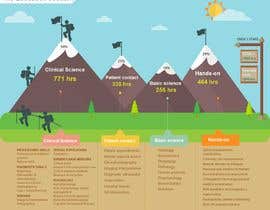The Top Daily Habits That Add To Pain In The Back And Just How To Stay Clear Of Them
The Top Daily Habits That Add To Pain In The Back And Just How To Stay Clear Of Them
Blog Article
Article Written By-Carstensen Svenningsen
Maintaining correct posture and avoiding common mistakes in daily activities can considerably affect your back wellness. From just how you sit at your workdesk to how you raise heavy items, tiny adjustments can make a huge difference. Visualize a day without the nagging back pain that impedes your every move; the option might be simpler than you believe. By making a few tweaks to your everyday routines, you could be on your means to a pain-free presence.
Poor Position and Sedentary Way Of Life
Poor position and a less active way of life are two major factors to back pain. When you slouch or hunch over while sitting or standing, you put unneeded strain on your back muscles and spinal column. This can bring about muscular tissue discrepancies, stress, and ultimately, chronic pain in the back. Furthermore, sitting for extended periods without breaks or physical activity can damage your back muscle mass and lead to tightness and pain.
To battle bad position, make an aware effort to sit and stand up straight with your shoulders back and lined up with your ears. Bear in mind to maintain your feet level on the ground and prevent crossing your legs for extensive periods.
Incorporating routine stretching and strengthening exercises right into your everyday regimen can additionally aid boost your posture and alleviate neck and back pain associated with a sedentary way of living.
Incorrect Training Techniques
Inappropriate training techniques can significantly contribute to back pain and injuries. When you raise heavy things, remember to flex your knees and utilize your legs to raise, rather than relying on your back muscular tissues. Stay clear of turning your body while training and keep the item near to your body to reduce pressure on your back. find out this here to keep a straight back and prevent rounding your shoulders while raising to stop unnecessary pressure on your spine.
Constantly examine the weight of the item prior to lifting it. If it's too hefty, ask for help or usage equipment like a dolly or cart to transport it securely.
Keep in mind to take breaks throughout lifting jobs to give your back muscular tissues a chance to relax and stop overexertion. By carrying out why not check here , you can protect against neck and back pain and decrease the risk of injuries, guaranteeing your back stays healthy and strong for the long-term.
Lack of Routine Exercise and Extending
An inactive way of living lacking normal exercise and stretching can dramatically add to pain in the back and pain. When you don't engage in physical activity, your muscles end up being weak and inflexible, causing inadequate pose and enhanced strain on your back. washington heights massage helps enhance the muscle mass that sustain your back, boosting stability and minimizing the danger of pain in the back. Integrating extending right into your routine can likewise improve flexibility, stopping stiffness and discomfort in your back muscular tissues.
To avoid neck and back pain brought on by an absence of exercise and extending, go for a minimum of 30 minutes of moderate exercise most days of the week. Include exercises that target your core muscles, as a solid core can help reduce stress on your back.
Additionally, take breaks to extend and relocate throughout the day, specifically if you have a desk work. Simple stretches like touching your toes or doing shoulder rolls can help eliminate stress and protect against back pain. Prioritizing regular workout and stretching can go a long way in keeping a healthy and balanced back and reducing pain.
Conclusion
So, keep in mind to stay up right, lift with your legs, and stay energetic to avoid back pain. By making straightforward changes to your daily behaviors, you can prevent the discomfort and limitations that feature pain in the back. Deal with your back and muscles by exercising excellent posture, correct training techniques, and routine exercise. Your back will thanks for it!
